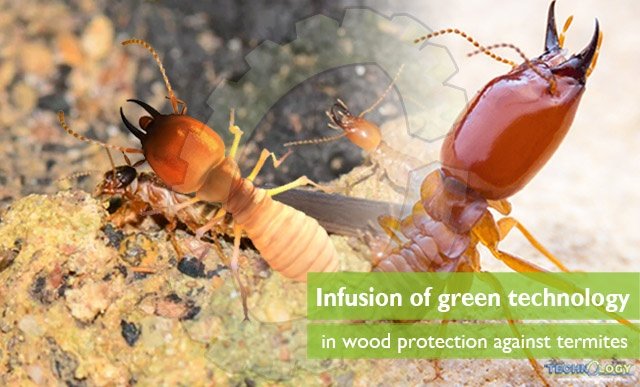Termites are social insects that belongs to order Isoptera. Like ants, some bees and wasps, termites divide labor among castes that consist of sterile male and female “workers” and “soldiers”. All termite colonies have fertile males called “kings” and one or more fertile female called “queens”. They mostly feed on dead plant material and cellulose, generally in the form of wood, leaf litter, soil, or animal dung.

Termites are major detritivores, particularly in the subtropical and tropical regions, and their recycling of wood and plant matter is of considerable ecological importance. Termites are often call the “silent destroyer”. They may be secretly hiding and thriving in your home or yard without any immediate signs of damage. All termites consume cellulose-based plant materials. Unfortunately, all homes, regardless of their construction type, can provide cellulose to termite as a food.
Some indications you may have a termite infestation:
- A temporary swarm of winged insects in your home or from the soil around your home.
- Any cracked or bubbling paint or frass (termite droppings).
- Wood that sounds hollow when tapped.
- Mud tubes on exterior walls, wooden beams or in crawl spaces.
- Discarded wings from swarmers.
Wood is a very important structural material, it is also a natural organic material consisting primarily of cellulose and hemicellulose (Chang et al., 1982). In addition to being a biological material that is both renewable and readily available, it has an excellent strength weight ratio and good ductile properties.
Wood resistence
Many wood species have a high degree of natural resistance to wood degrading organisms and even then treatment with a wood preservative is imperative(Zhu et al., 2001). In recent years, composite wood materials like chip board, molding and veneer getting more consideration then solid wood, as a consequence of change in building design and defensive practice. While these materials demonstrate noteworthy imperviousness to bio-deterioration, they are still frail to natural attack.
Usually termites cause financial losses to woody structures by damaging woody material that’s why termites are of public interest. In Pakistan, 53 species are there, out of which 11 are consider as pest of timber and risk to wooden items (Manzoor and Mir, 2010).
The convenient move against termite attack and its control can enhance the life of wooden articles, and can spare wooden articles from exorbitant harm. Therefore, wood is treating with synthetic chemicals such as chromated copper arsenate (CCA), pentachlorophenol, tri-butyl-tin oxide and creosote.
Although, chemical control is an effective protective measure against termites but their enormous use has catastrophic effects on environment and the efficacy is not sustainable (Abdululai et al., 2001; Venmalar and Nagaveni, 2005). Even CCA, the most commonly use preservative, which is considering non-toxic to human being and wildlife because of its occurrence and stability in wood is now recognize for releasing into the environment over time (Richardson, 1978; Asamoah et al., 2011). This leads to find alternatives of these chemicals.
Wood protection
Numerous oils and hydrocarbons products such as Solignum, Bio-wood and bitumen are available for wood protection. Solignum is a colorless oil, penetrates into the wood to protect and eradicate wood boring insects. Active ingredient present in solignum is Permethrin, which is commonly use as insect repellent (Maddison et al., 2008).
Bio-wood is a commercial product made from on Anacardium pericarp being marketed by Kanzo AG, Pakistan. Bitumen is a viscous black mixture of hydrocarbons acquired normally or as a buildup from petroleum refining. It is utilized for street surfacing and material (Zakar, 1971). These most advanced wood preservatives in the market to date. These innovation are both in micro-emulsion formula, which makes the molecules microscopic.
As a result, the active ingredient penetrates through the wood on which they apply more easily and more deeply. This means even better protection against termites. These are made with green technology to ensure minimal impact on the environment. And are designed to provide maximum wood preservation using the least amount of chemical.
A study was conducted in Insect Toxicology Laboratory, Department of Entomology, University of Agriculture Faisalabad. The small blocks of chipboard, veneer were treated. Moldings with different concentration of these chemicals and these all proved lethal to termites. It found sound wood after exposure of two month.

